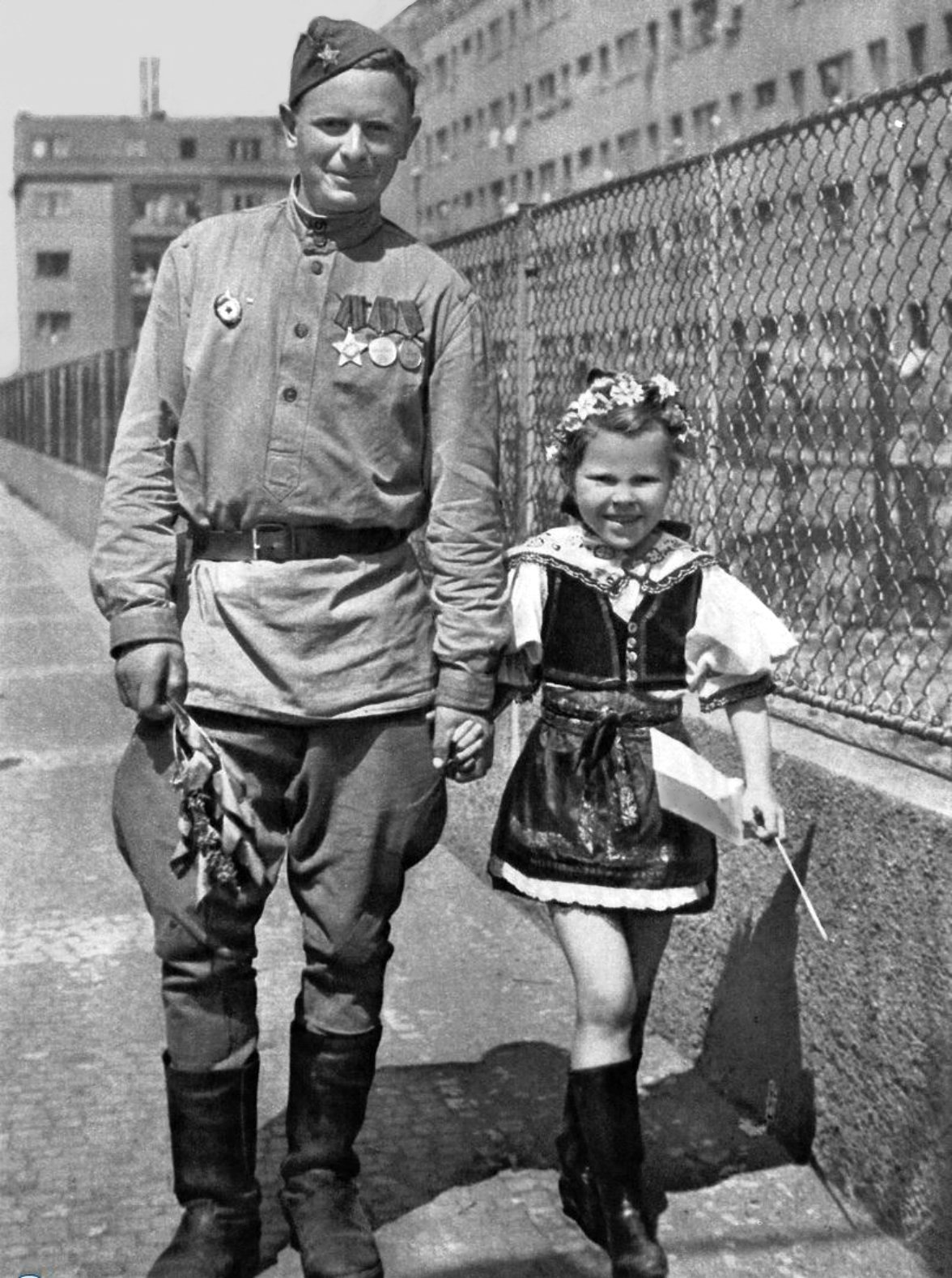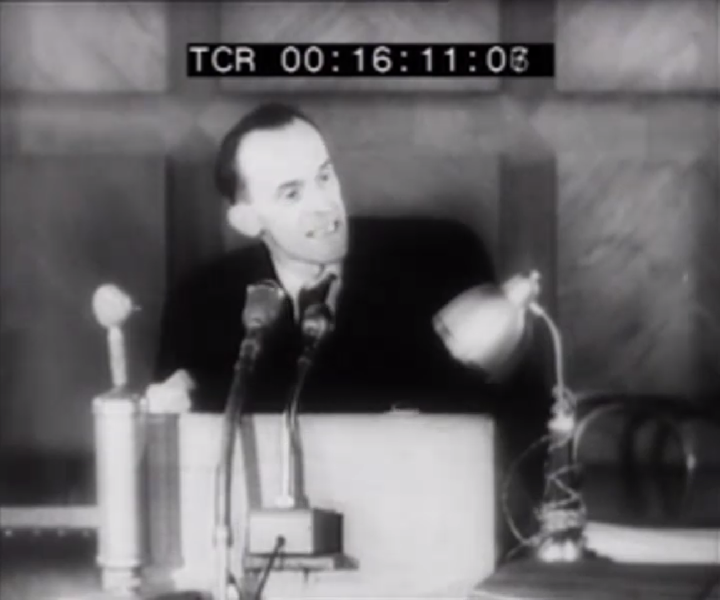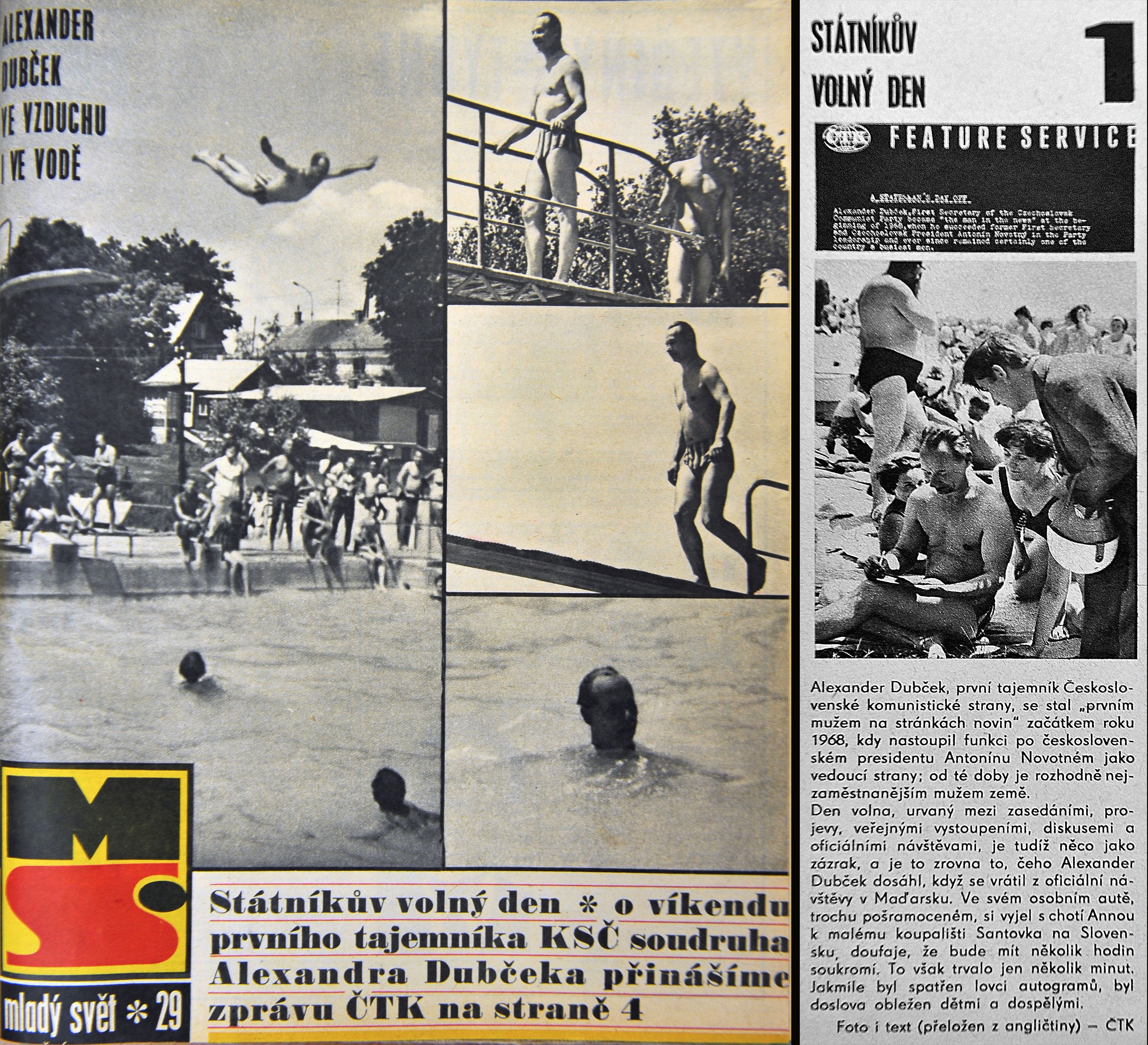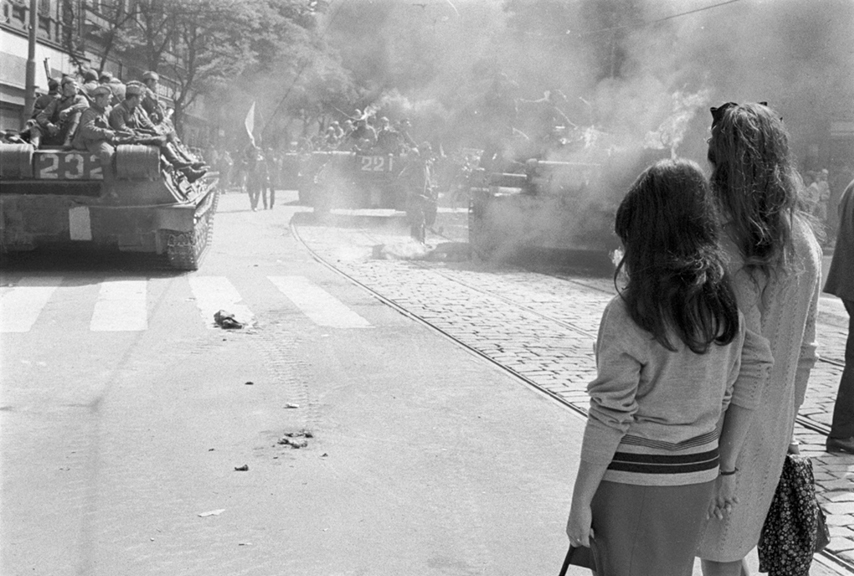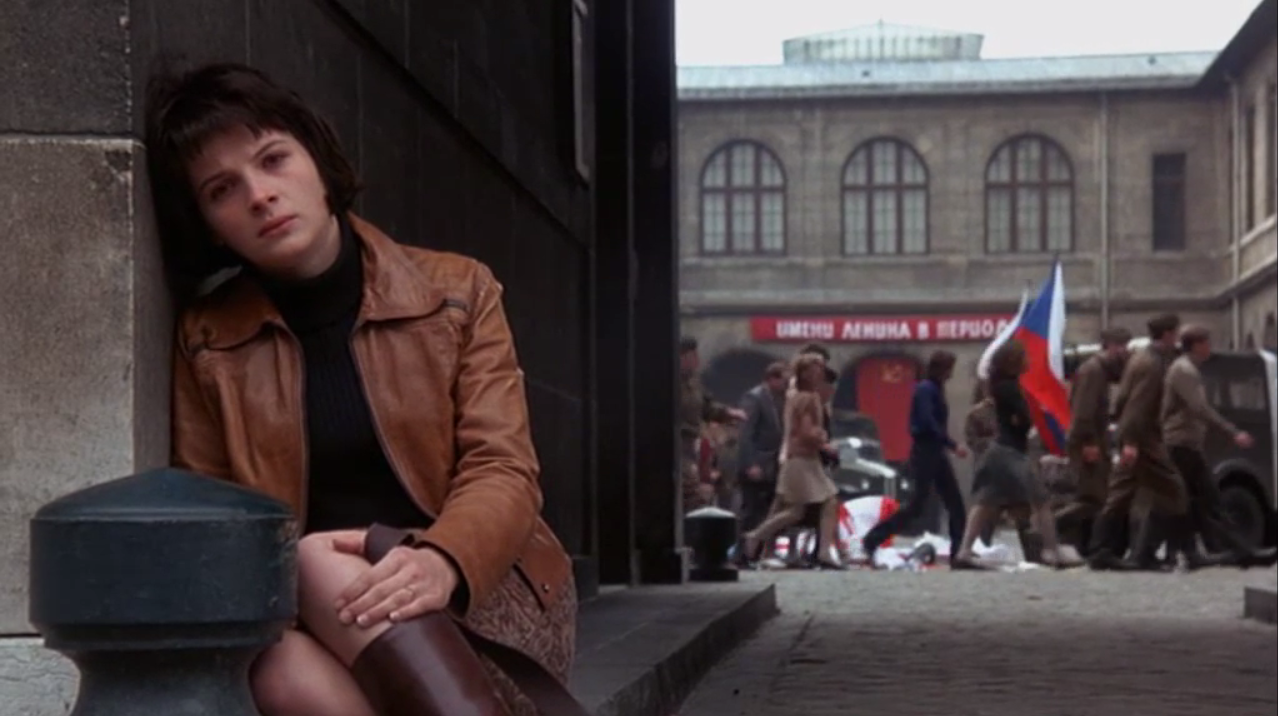Questions:
- What emotions is the photo trying to depict?
- What do you think the soldier’s nationality is, and what do you think he represents?
- What purpose could having photos like this in the media serve?
As a young man, Milan Kundera was an ardent communist supporter. His fervor for the communist ideology, however, makes some sense given what he had seen so far in his life. Kundera was part of the generation that came of age during World War II, when the Czech lands were under Nazi control as the Protectorate of Bohemia and Moravia. At the war’s end, both the older and younger generations had been disappointed by the liberal democratic system from before the war, and as a replacement they were draw to the political system of Prague’s liberators — the Soviets. The picture, taken soon after Prague’s liberation, shows a Soviet soldier walking with a young Czech girl, who is dressed in her national costume and carrying a Czechoslovak flag. Many young, educated people became early communist supporters in Czechoslovakia, and Milan Kundera was resolutely among them. Take a look at these stanzas from “The Great Parade”, a poem from his first poetry collection, Man, a wide garden (Člověk, zahrada širá), published in 1953. The Great Parade It was a few days after the huge war. The morning air glittered over the cities’ ruins. A workers’ parade set out from the suburban buildings. One, two flags and some red ribbons. And each of the workers carried on his body the burden of life, a bag full of pain, and the old insults, charred spears, protruded from those bags, casting long shadows. … The parade went on and on and the years went behind it and whoever went against it was blown into the ditches. The roads they traveled on raised up in their honor slender poplars like decorated spears. And those bags of suffering gradually disappeared, song sounded out all around, larks flew and all went lightly, as though with some buoyancy under a canopy of song, bells, and calls. They went lightly as though in a dance and from the dust of their tracks rose up buildings and white cities in the groves. And an old worker cried out: “Who will remember my grave? I’m only just starting! And everybody is starting!” What can you gather about the tone of the poem, and how does it change from the beginning to the end? What imagery stands out to you? Do you notice any symbolism, and if so, what? Like many young poets of the era, Kundera based much of this poetry collection in the Stalinist ideology, creating an amalgamation of art and Stalinist ideology (although we can’t tell exactly how much he believed in the ideology, as the regime would not have allowed anyone to publish writing that spoke out against Stalinism). You can find a lot of imagery typical to Stalinist-era propaganda in the stanzas above. Parades in general were a regular feature in any major celebration throughout the communist regime, and the red of the ribbons was the same red that was such a visible symbol of communism everywhere. The workers, the class that communism means to give voice to, are the heroes of the poem, honored even by the roads they travel on. The buildings and white cities that rise up behind them (contrast that with the ruins from the second line of the first stanza) are also emblematic of the era, as the communist governments put a lot of effort into modernization, a large part of which was building new, modern structures. In this new, communist world imagined in Kundera’s poetry, the workers are finally able to shed their burdens and live happily.
Explore

